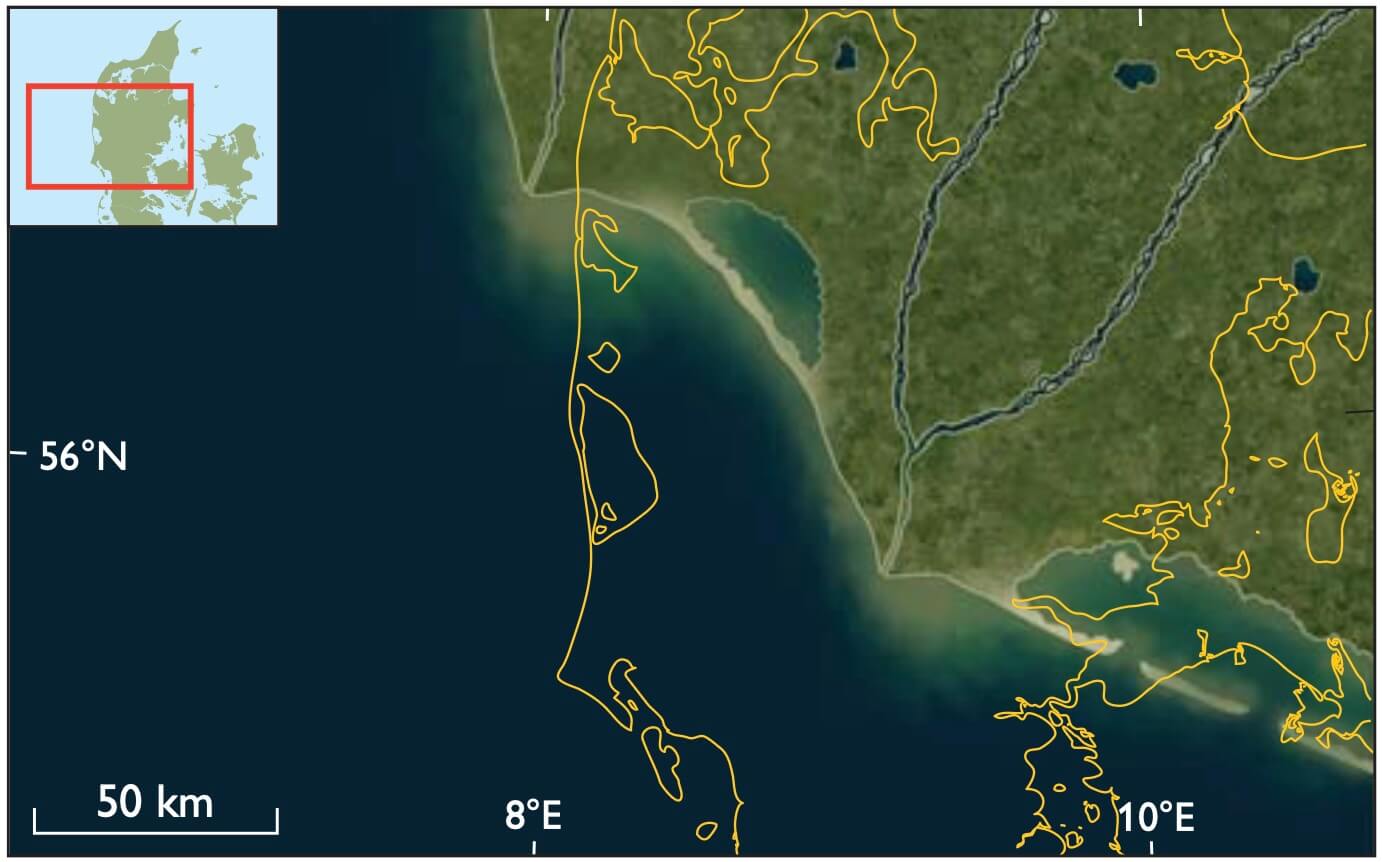
How to Cite
Share
Abstract
The distribution of sand in deltas depends on the delta regime: wave, fluvial or tidal-dominated delta (Orton & Reading 1993; Bhattacharya & Giosan 2003). During the Early Miocene, three delta complexes built out from the Fennoscandian Shield into the eastern North Sea Basin (Rasmussen 2004). The oldest delta complex, which is informally named the Billund delta, is located in Jylland (Fig. 1). This delta complex was mainly wave-dominated (Rasmussen & Dybkjær 2005; Hansen & Rasmussen 2008; Rasmussen 2009a). Recently, it has been demonstrated that in modern wave-dominated delta environments sand mostly accumulates on the updrift portion of the delta (Fig. 2) whereas alternating mud and sand, e.g. barrier-lagoon complexes, occupy the downdrift portion of the delta system (Bhattacharya & Giosan 2003). The current study shows that most of the sand in the submarine part of the Miocene wave-dominated Billund delta (mainly lower shoreface and delta slope sand) was deposited downdrift to the delta front and thus differs from the foreshore and uppermost shoreface accumulation found in recent delta complexes.
How to Cite
Share
Copyright (c) 2010 Erik S. Rasmussen, Jens Bruun-Petersen

This work is licensed under a Creative Commons Attribution 4.0 International License.
Downloads
Edited by Ole Bennike, Adam A. Garde and W. Stuart Watt
This Review of Survey activities presents a selection of 23 papers reflecting the wide spectrum of activities of the Geological Survey of Denmark and Greenland, from the microscopic to the plate-tectonic level. In addition, an obituary about the former director of the [...]









